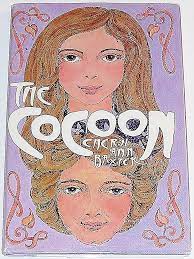Articles/Essays – Volume 15, No. 1
Not Quite a Butterfly | Cheryl Ann Baxter, The Cocoon
A book as personal as Cheryl Baxter’s The Cocoon can’t help but evoke a very personal response. I share with the main characters of the book a career as a teacher, an abiding interest in French and an unforgettable experience while doing temple work for a relative. As a result, I related to this short and simple book with much emotion.
Most well-read church members shy away from books that even hint of preachiness or schmaltz. Ordinarily I would not have read a Deseret Book publication catalogued under “genealogy.” The Cocoon, however, was a pleasant surprise: the moral was clear, it was generally well written, the tears occasionally flowed freely and only the most cynical reader would be “put off” by its contents.
The personal interplay between Carrie Langue, a young, empathetic student who craves love, and Marjorie Thorpe, her demanding, emotionally scarred French teacher, is a sensitive drama of communication. In fact, one could eliminate the last thirty pages and market the book nationally as a poignant short story of a human relationship.
The last third of the book, a report of Carrie’s conversion and her subsequent genealogical research and temple work for her friend, is not necessary to make it a meaningful story. Although it brings the story to a rewarding conclusion, it not only limits the market to an LDS audience, but it reads like an appendix.
The book is divided into three sections: Cocoon, Metamorphosis and Right. The symbolism is obvious. In the “Cocoon” the reader is intimately drawn into the lives of two women who are so wrapped up in personal needs that they are unable to break out of their protective shells without the warmth of each other’s love. Mrs. Baxter describes their relationship skillfully and engagingly. The “Metamorphosis” gives a glimpse of the changes that self-confidence has brought to their lives: marriage for Carrie and a pleasure-filled excursion for Mme. Thorpe. The “Flight” records that final step which most of us fail to take. Carrie puts forth the effort required to free her friend (taken by unexpected death) for an eternal journey.
The subject matter of the last two sections is as lofty as that of the first; the presentation is not. The reader is suddenly removed from the intimacy that was so entrancing throughout the first sixty pages and is simply told the next eleven years of history in seven letters and twenty-one journal entries. One entry is a clear thesis statement of the entire book:
“I have gained a personal testimony that relationships are eternal and are meant to be so, that we form friendships in the pre-existence that may continue during our second estate. I believe that those friendships will continue and endure through eternities. This is why it is so hard for us to part with someone we love . . . Instinctively we know that loneliness is not natural … ”
I had, earlier in the hook, felt the pain of loneliness and the healing power of love. I was deeply moved by it. It seemed unnecessary to be told the conclusions I had already reached.
I understand the difficulty of trying to communicate the intense spiritual feelings associated with doing temple work for someone you love. Experiences that are uniquely Mormon are seldom communicated convincingly in writing, even to an LDS audience. Perhaps Mrs. Baxter felt that a simple understatement would be preferable to a didactic novel on the joys of temple work. If so, she was right. However, the first section of the book shows that she does have the skill to handle emotional subject matter with sensitivity and control. I wish that she had attempted to treat the “Flight” in the same way.
The Cocoon by Cheryl Ann Baxter, Salt Lake City: Deseret Book Co., 1980, 90 pp., $4.95.


 Back to full Issue
Back to full Issue

